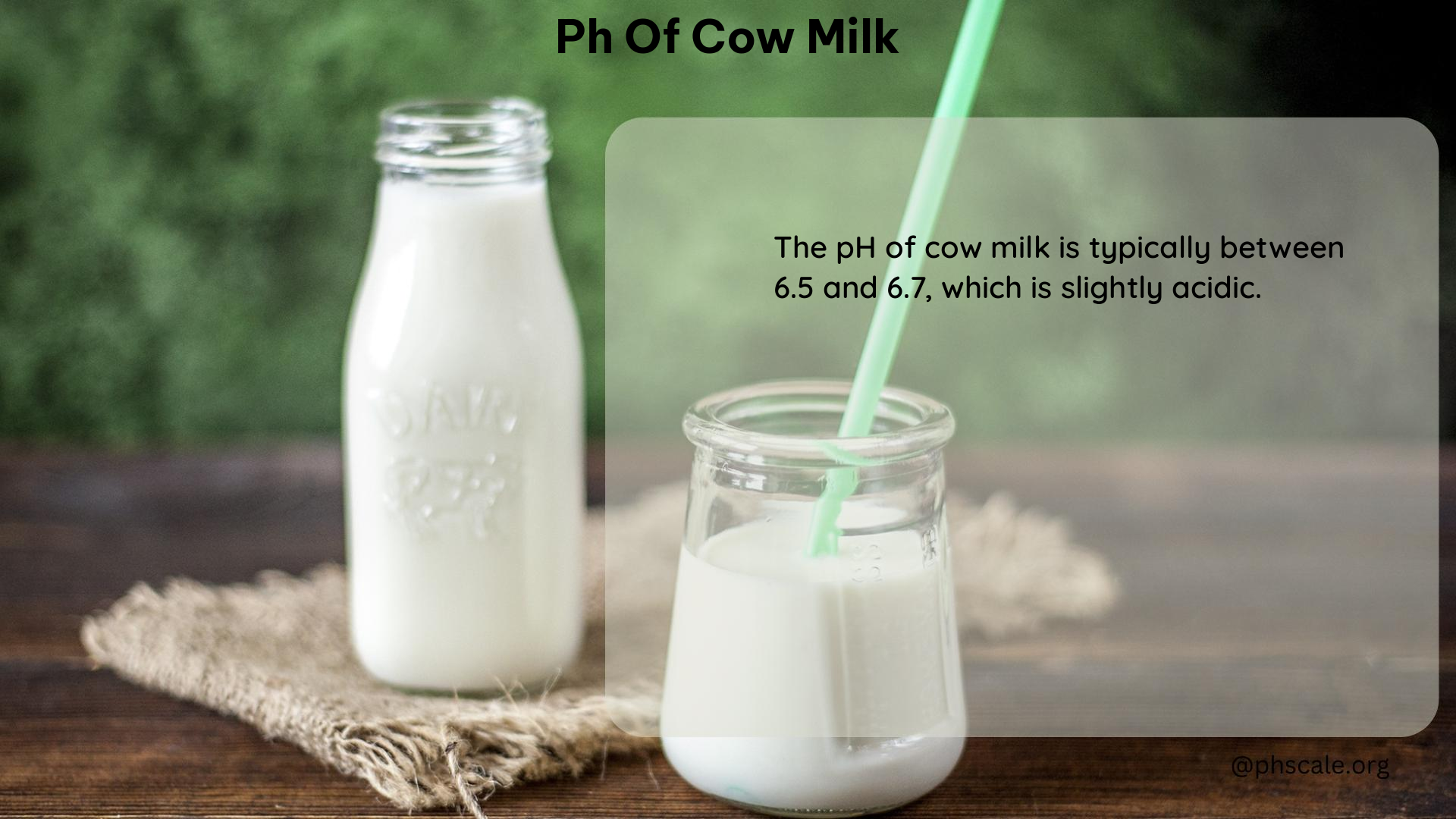The pH of cow milk is a crucial factor that affects its quality, safety, and overall nutritional profile. Typically, the pH of fresh cow milk ranges between 6.5 and 6.7, making it slightly acidic. This pH level can vary depending on various factors, including the health of the cow, the freshness of the milk, and the processing methods used.
Factors Affecting the pH of Cow Milk
Freshness of Milk
Fresh milk from a healthy cow usually has a pH between 6.5 and 6.7. As the milk ages and goes sour, the pH decreases, indicating spoilage and increased acidity.
Cow Health
Milk from cows with health issues, such as mastitis, may have a lower pH due to the presence of bacteria and other contaminants. This can affect the overall quality and safety of the milk.
Pasteurization
The pasteurization process can slightly alter the pH of milk, as the heat treatment can change the chemical composition of the milk.
Balancing the pH of Cow Milk

Consume in Moderation
Enjoying milk as part of a balanced diet, with a mix of acid-forming and alkaline-forming foods, can help maintain overall pH balance in the body.
Choose Raw Milk
Raw milk from healthy cows may be more alkaline-forming, but it is essential to ensure proper handling and safety precautions to avoid bacterial contamination.
Add Alkaline-Forming Foods
Combining milk with alkaline-forming foods, such as fruits and vegetables, can help balance the pH effect on the body.
Contaminants and Chemicals in Cow Milk
Bacteria
Milk from cows with mastitis can contain harmful bacteria, which can lower the pH and affect the quality of the milk.
Pesticides and Antibiotics
Milk from cows treated with pesticides or antibiotics can contain residues of these chemicals, which can impact the pH and overall quality of the milk.
Hormones
Milk from cows treated with hormones can contain hormone residues, which can affect the pH and nutritional profile of the milk.
Home Remedies and Alternatives
Add Lemon Juice
Mixing a small amount of lemon juice with milk can help balance the pH, as lemons are alkaline-forming despite their acidic taste.
Try Plant-Based Alternatives
For those who need to limit dairy or prefer a more alkaline-forming option, plant-based milks like almond milk or soy milk can be a good alternative.
Helpful pH Quantity to Consume
The ideal pH quantity to consume depends on individual nutritional needs and health conditions. Consult a dietitian or nutritionist for personalized guidance on the appropriate amount of milk to include in your diet.
History of pH in Cow Milk
The study of pH in cow milk has been an area of interest for researchers since the early 20th century. Researchers have investigated the effects of pH on milk quality, spoilage, and safety, leading to the development of modern milk quality control and safety standards.
References
- ThoughtCo: “What Is the Acidity or pH of Milk?” by ThoughtCo, 2022.
- ScienceDirect: “A Comparative Study of pH and Temperature Effects on the Acidic Properties of Milk” by ScienceDirect, 1995.
- Sigma-Aldrich: “pH of Milk and Milk Products” by Sigma-Aldrich.
- Healthline: “The pH of Milk and Plant-Based Alternatives: Effects on the Body” by Healthline, 2018.
- ResearchGate: “A Study of the pH of Individual Milk Samples” by ResearchGate, 2009.
